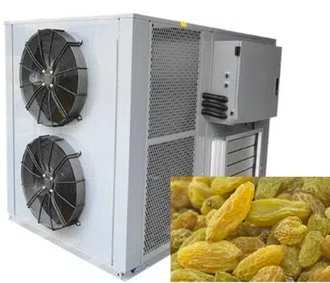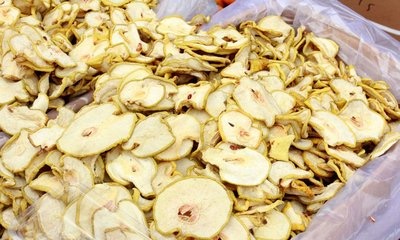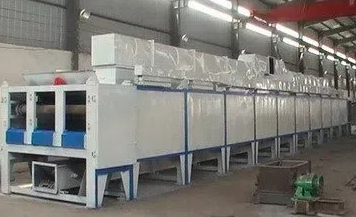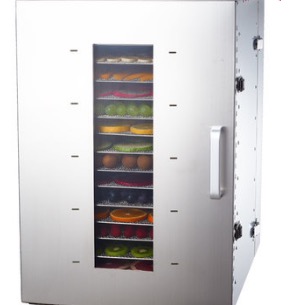
Content Menu
● Understanding Heat Pump Technology
● Key Features of Food Drying Machines
>> Temperature Control
>> Humidity Control
>> Energy Efficiency
>> Capacity
>> Ease of Use
>> Durability and Build Quality
>> Safety Features
>> Versatility
>> Maintenance Requirements
>> Warranty and Support
● Conclusion
● Frequently Asked Questions
>> 1. What is the difference between a heat pump dryer and a traditional dryer?
>> 2. How do I determine the right capacity for my food drying needs?
>> 3. Can I dry different types of food in the same batch?
>> 4. What maintenance is required for a food drying machine?
>> 5. How long does it typically take to dry food in a heat pump dryer?
When it comes to food processing, drying is a crucial step that can significantly affect the quality, shelf life, and flavor of the final product. As a manufacturer of food drying machines, understanding the features that make a drying machine effective is essential for providing the best solutions to your clients. In this article, we will explore the key features to consider when selecting a food drying machine, particularly focusing on the benefits of heat pump technology.

Understanding Heat Pump Technology
Heat pump dryers utilize a unique method of drying that is both energy-efficient and effective. Unlike traditional dryers that expel hot air, heat pump dryers recycle the air within the drying chamber. This process not only conserves energy but also allows for lower drying temperatures, which is particularly beneficial for sensitive food products.
Key Features of Food Drying Machines
Temperature Control
One of the most critical features of a food drying machine is its ability to control temperature accurately. Different foods require different drying temperatures to preserve their nutrients and flavor. A good heat pump dryer should offer adjustable temperature settings to accommodate various food types, from fruits and vegetables to meats and herbs.
For instance, drying herbs typically requires lower temperatures to maintain their essential oils, while fruits may need slightly higher temperatures to effectively remove moisture. The ability to customize these settings ensures that each food item is dried optimally, enhancing the final product's quality.
Humidity Control
Humidity control is another essential feature. The ability to monitor and adjust humidity levels ensures that food dries evenly and prevents spoilage. Advanced models come equipped with sensors that automatically adjust humidity levels based on the type of food being dried.
This feature is particularly important for foods that are prone to mold or spoilage if not dried properly. By maintaining the right humidity levels, manufacturers can ensure that their products have a longer shelf life and retain their flavor and nutritional value.
Energy Efficiency
Energy efficiency is a significant consideration for any food processing operation. Heat pump dryers are known for their low energy consumption compared to traditional drying methods. This efficiency not only reduces operational costs but also minimizes the environmental impact of food processing.
For businesses looking to reduce their carbon footprint, investing in energy-efficient equipment is a step in the right direction. Heat pump dryers can save up to 50% more energy than conventional dryers, making them an attractive option for eco-conscious companies.

Capacity
The capacity of the dryer is crucial, especially for businesses that process large quantities of food. A 7 cu ft heat pump dryer provides ample space for drying a significant amount of food at once, making it ideal for commercial operations.
This capacity allows for batch processing, which can streamline production and improve efficiency. For example, a restaurant or food manufacturer can dry large quantities of fruits or vegetables in one go, reducing the time and labor involved in the drying process.
Ease of Use
User-friendly controls and interfaces are vital for efficient operation. Look for machines with intuitive controls that allow operators to set drying times and temperatures easily. Some models even come with programmable settings for specific food types, simplifying the drying process.
An easy-to-navigate interface can significantly reduce training time for new employees, allowing them to operate the machine effectively from day one. This ease of use can lead to increased productivity and fewer errors during the drying process.
Durability and Build Quality
The construction of the drying machine should be robust and durable. Stainless steel is a preferred material for food processing equipment due to its resistance to corrosion and ease of cleaning. A well-built machine will withstand the rigors of daily use and provide reliable performance over time.
Investing in high-quality materials not only extends the lifespan of the equipment but also ensures that it can handle the demands of a busy food processing environment. Machines that are built to last can save businesses money in the long run by reducing the need for frequent repairs or replacements.
Safety Features
Safety is paramount in any food processing environment. Ensure that the drying machine includes safety features such as automatic shut-off mechanisms, overheat protection, and child safety locks. These features help prevent accidents and ensure safe operation.
For example, an automatic shut-off feature can prevent overheating, which could lead to fires or damage to the machine. By prioritizing safety, manufacturers can create a secure working environment for their employees.
Versatility
A versatile food drying machine can handle a variety of food types and drying methods. Some machines offer options for dehydrating, fermenting, and even smoking foods. This versatility can be a significant advantage for businesses looking to expand their product offerings.
For instance, a manufacturer that specializes in dried fruits may also want to explore producing vegetable chips or jerky. A machine that can accommodate these different processes allows for greater flexibility and innovation in product development.
Maintenance Requirements
Consider the maintenance requirements of the drying machine. Machines that are easy to clean and maintain will save time and reduce downtime in production. Look for models with removable trays and easy access to internal components for cleaning.
Regular maintenance is essential for ensuring the longevity and efficiency of the machine. Simple tasks, such as cleaning filters and checking for blockages, can prevent larger issues down the line and keep the machine running smoothly.
Warranty and Support
Finally, consider the warranty and customer support offered by the manufacturer. A good warranty can provide peace of mind, while responsive customer support can help resolve any issues that arise during operation.
Having access to reliable support can make a significant difference in minimizing downtime and ensuring that any problems are addressed quickly. A manufacturer that stands behind its products demonstrates confidence in their quality and reliability.
Conclusion
Choosing the right food drying machine is essential for ensuring the quality and efficiency of your food processing operations. By focusing on features such as temperature and humidity control, energy efficiency, capacity, and ease of use, you can select a machine that meets your specific needs. Heat pump technology offers numerous advantages, making it an excellent choice for modern food drying applications.
Investing in a high-quality heat pump dryer not only enhances the quality of your products but also improves operational efficiency and reduces energy costs. As the demand for dried foods continues to grow, having the right equipment will position your business for success in a competitive market.

Frequently Asked Questions
1. What is the difference between a heat pump dryer and a traditional dryer?
Heat pump dryers recycle air and use lower temperatures, making them more energy-efficient and better for drying sensitive foods. Traditional dryers expel hot air, which can lead to higher energy consumption and potential damage to delicate food items.
2. How do I determine the right capacity for my food drying needs?
Consider the volume of food you process regularly. A 7 cu ft dryer is suitable for medium to large operations, allowing for batch processing and efficient drying of various food types.
3. Can I dry different types of food in the same batch?
It is best to dry similar types of food together to ensure even drying, as different foods have varying moisture content and drying times. Mixing foods can lead to inconsistent results and may affect the quality of the final product.
4. What maintenance is required for a food drying machine?
Regular cleaning of trays and internal components, checking for wear and tear, and ensuring proper airflow are essential for maintenance. Following the manufacturer's guidelines for maintenance will help prolong the life of the machine.
5. How long does it typically take to dry food in a heat pump dryer?
Drying times vary based on the type of food and moisture content, but heat pump dryers generally take longer than traditional dryers due to lower temperatures. However, the quality of the dried food is often superior, making the extra time worthwhile.












